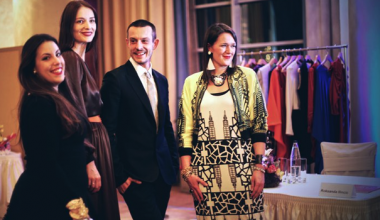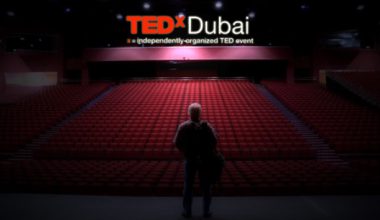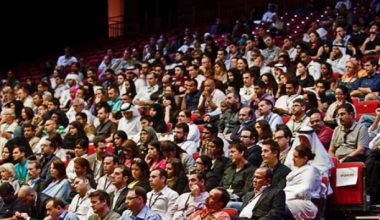'The curious desert' is a two-part exhibition conceived by Icelandic-Danish artist, Olafur Eliasson, for a site in the desert outside of Al Thakhira Mangrove Reserve and the galleries of the National Museum of Qatar in Doha. While the indoor part of the exhibition closed July 31, visitors are still able to view the outdoor exhibition until 28 October, 2023. The works continue to explore Eliasson’s abiding interests in light and color, geometric studies, ecological awareness, and more-than-human relationships. The exhibition is presented as part of Qatar Creates, the year-round national cultural movement that curates, promotes, and celebrates the diversity of cultural activities in Qatar.
Her Excellency Sheikha Al Mayassa bint Hamad bin Khalifa Al Thani, Chairperson of Qatar Museums, said, “The curious desert by Olafur Eliasson illustrates the power and problem- solving ability of art. Olafur’s profound body of work, including the new installations in the Qatari desert, opens an important dialogue about the environment, one of the most pressing topics of our time, in the context of our nation’s natural landscapes. This exhibition is unique in its presentation, which exists both inside and outside of the National Museum of Qatar, to further demonstrate how art is not confined to galleries, but is around us, everywhere, to inspire and educate.”
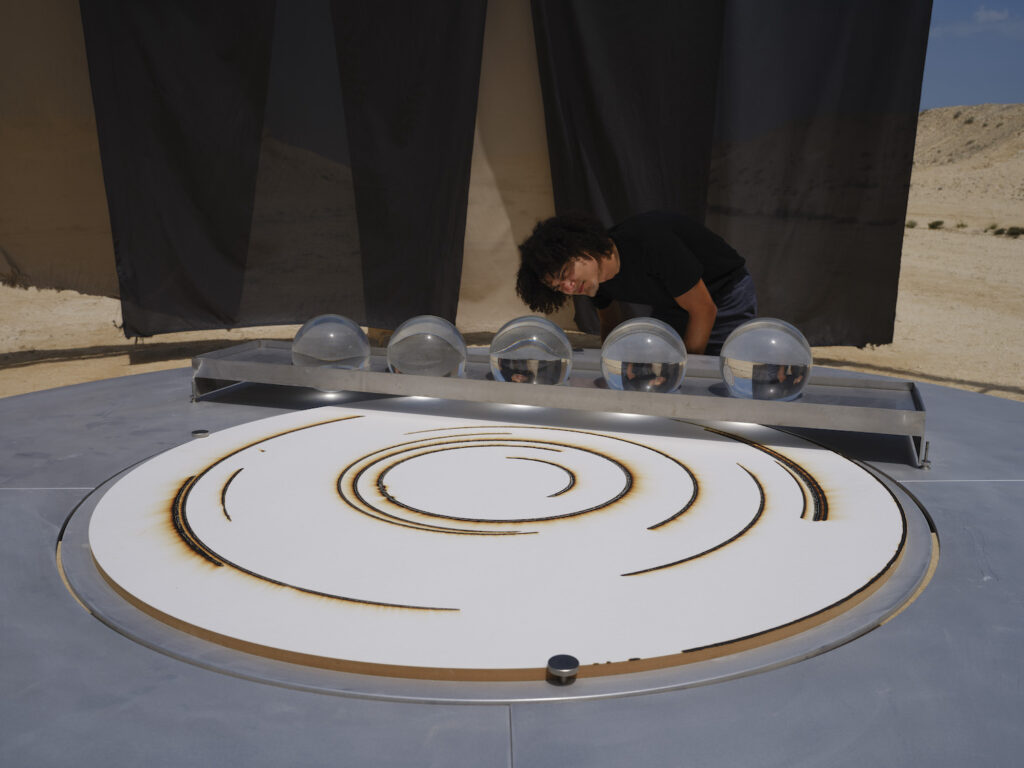
Photo: Anders Sune Berg
Courtesy of the artist; neugerriemschneider, Berlin; Tanya Bonakdar Gallery, New York / Los Angeles
Located in a sabkha habitat some 64 kilometres northeast of Doha, near the Al Thakhira Mangrove Reserve, twelve temporary pavilions enclose a series of new, experimental artworks that respond to the ephemeral natural phenomena of the local environment, such as sunlight, wind, and water.
Olafur describes the experience of nature as a creative collaborator: “The outdoor part of 'The curious desert' resembles a desert laboratory, created especially for this exceptional landscape, known as a sabkha – a low plain covered in salt and other mineral deposits left over from evaporated sea water, a rich landscape bearing, as it were, the presence of absence. For some of the pavilions I have enlisted the sunlight, wind, and water to co-produce the artworks. Other pavilions host glacial sediments, remnants of oil spills, and salt crystals left over from evaporating lagoon water. Wandering in and out of the gathering of tent-like pavilions becomes an individually crafted journey. This allows you to sensitize yourself to the desert surroundings, to naturally occurring phenomena, and to the emergence of art through processes that draw on more-than-human collaboration.”
While inside the National Museum of Qatar, there was an extensive presentation of works from throughout the artist’s career which invited viewers to situate themselves anew in relation to expansive light installations, photo series from Iceland, complex geometric studies, watercolours, optical devices, and a sprawling research map.
We spoke to Olafur Eliasson about the importance of nature in the installation and what advice he has for people wanting to enter the creative sector.

Photo: Anders Sune Berg
Courtesy of the artist; neugerriemschneider, Berlin; Tanya Bonakdar Gallery, New York / Los Angeles
Khaleejesque Magazine: The site-specific installations are based in the desert. How are they heavily impacted by the surroundings?
Olafur Eliasson: The first invitation I received to Qatar was 10 years ago, it was a long time ago. Then I finally came about five years ago and I started by exploring the countryside, more than the city. What I was interested in, which I guess the Arab Gulf has in common, is this tendency to kind of create these future cities with spectacular and statement architecture in the midst of conditions that normally is not very suitable for exactly that. It so happens that my native country Iceland has a lot of this landscape that has no trees. So my first impression was that this reminds me of home at the other end of the temperature scale, and the rain scale, it’s that exact perfect opposite. Where it's really cold, it's really hard. But what they have in common is that it's a mistake to think that it's an empty landscape. That it's barren, that's not true. It has lots of ecological sophisticated ecosystems. And it struck me that like in many places, and as in life, there is a great need to educate.
(K.M.): How did your time in Qatar shape your impressions and your work?
(O.E.): I enjoyed myself, the learning from others is quite impressive. A local ecologist, who is a researcher here, provided the consultancy report on the environmental study on the site that we were on. So in order to minimize our environmental impact, we had an ecologist assistant then and there, then through the landscape, I came to have a relationship with the region.

Saltwater-drawing observatory, 2023
Photo: Anders Sune Berg
Courtesy of the artist; neugerriemschneider, Berlin; Tanya Bonakdar Gallery, New York / Los Angeles
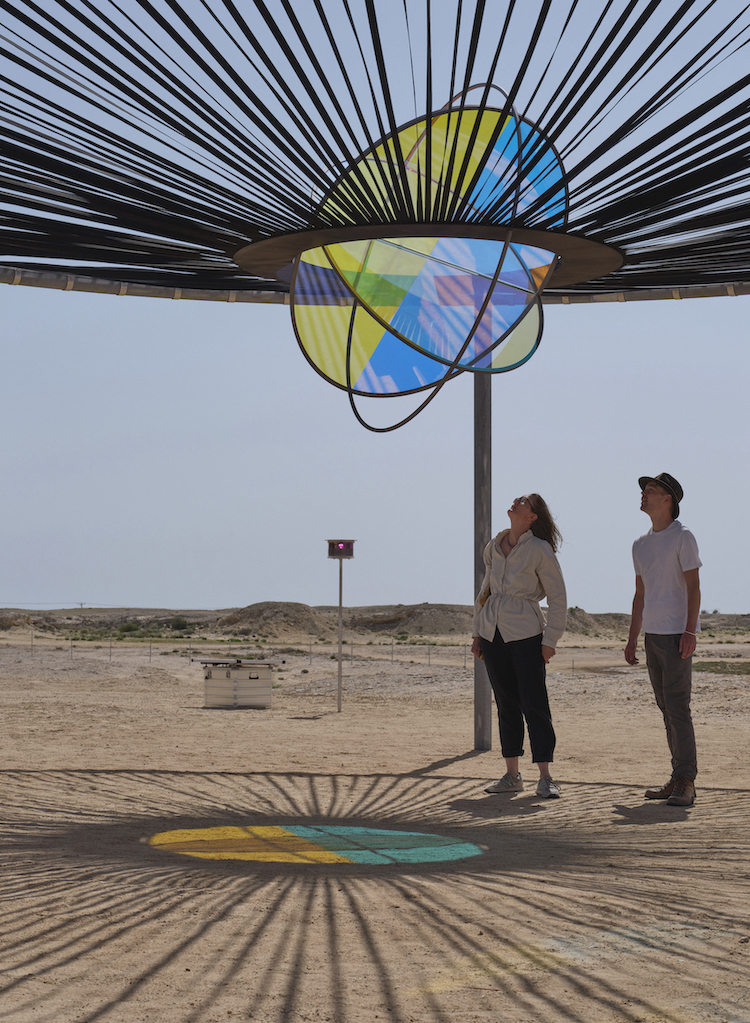
Slow solar event, 2023
Photo: Ander Sune Berg
Courtesy of the artist; neugerriemschneider, Berlin; Tanya Bonakdar Gallery, New York / Los Angeles
(K.M.): There has been a huge transformation in the cultural sector and in the creative sector in the region within the last 5 years. And also, as evidently we can see in Qatar, more and more youth want to enter this sector. What advice do you have for someone who wants to pursue a career in the arts?
(O.E.): To not make the mistake of saying that the art market is the art world. The art market is a capitalistic platform within the consciousness with conditions external to the culture. So that is one big mistake, because the art market has a lot of inflammatory glamorous sides to it that are short lived. I can see a tendency in the Arab Gulf especially when it comes to consumerism. I think consumerism deprives you of so many qualitative things and the money would have been better spent on the planet. The earth is collapsing underneath your feet. So entering culture, as I would say, has to do primarily with not to look ahead, maybe this to about looking around you. It is about looking down and being down to earth and feeling what happens under your feet. That's my advice.
'The curious desert' is on view from 19 March to 28 October, 2023 at Al Thakhira Mangrove Reserve in Qatar
Images courtesy of Qatar Museums





